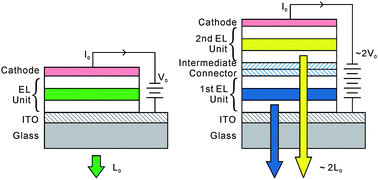Interface studies of intermediate connectors and their roles in tandem OLEDs†
Abstract
Understanding the physical properties of the intermediate connectors in tandem organic light-emitting diodes (OLEDs) is not only important fundamentally, but also crucial to developing high-efficiency tandem organic (opto)electronic devices. Here, the working mechanisms of several effective intermediate connectors in tandem OLEDs using doped or non-doped organic

- This article is part of the themed collection: Interface engineering of organic electronics

 Please wait while we load your content...
Please wait while we load your content...